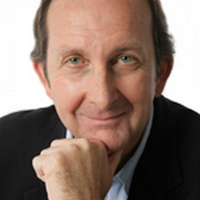

The silence on what our politicians are doing about our housing crisis is disappointing as rents continue to surge across the country. And the impact of too many people and too few homes has meant that home prices have spiked 10.3% across our capital cities over the past year, putting pressure on rents to climb higher.
Emma Kirk on news.com.au reports that “Data from Proptrack revealed Sydney was still the most expensive city to rent a home in Australia, with the median rent rising 2.8 per cent over the past three months reaching $740 per week.”
But Sydney didn’t have the strongest growth when it comes to rents. Perth has supply problems and rents were up a whopping 18.2% with median rents reaching $660, followed by Adelaide up 11.8% to $600 and Melbourne by 10.6% to $580.
Of course, these are average rents but if you want to live in popular suburbs, the rents literally go through the roof.
Here’s The Daily Telegraph’s take on the expensive rental spots in Sydney: “The top five were in the eastern suburbs, with Rose Bay topping the list with a $625 increase, taking the weekly median rent to $2000, followed by Vaucluse with a $500 rise jacking up rents to $3000. However, the highest rent increases weren’t confined to the eastern suburbs. Homes in Northbridge went up $263 with the median rent up to $1538 per week, while Rosebery also increased $243 per week.”
This isn’t just a social cost of living problem, the surge in rents has been feeding into inflation and partly explains why 13 interest rate rises haven’t been enough to get the CPI into the RBA’s preferred 2-3%.
So, what have been the responses of our politicians?
The Federal Government has now reduced migration targets with the permanent Migration Program planning level at 185,000 places, down from 190,000 places in 2023-24. But that doesn’t seem a big change. But the issue about people coming here, with demand for accommodation and the knock-on effect on rents, is more understandable when you see the following numbers from the ABS: “In 2022-23, the number of migrant arrivals increased to 737,000, up from 427,000 the year before. This equates to an annual increase of 73 per cent. In 2020-21, there was an annual decrease of 71 per cent, due to the travel restrictions during the pandemic.”
And the whole problem gets even more worrying when you look at the number of homes we build each year.
According to Tim Reardon, chief economist of the Housing Industry Association: “There were only 163,836 new homes that commenced construction in 2023, the lowest volume of starts in over a decade, and far from the 240,000 required each year to meet the Australian government's target of 1.2 million new homes over the next five years.”
I’ve reported for over 20 years that the total slug on builders creating properties for sale, from all levels of governments, and especially local councils, is around 30% and most people in the industry say that’s about right.
Until we have politicians who seriously want to make building more profitable for those who take the risk to create homes for Australians, we will have to live with this rental crisis.
I always try to think about the relevant minister when I have to report on economic problems we have to deal with. So, in this case, I had to scratch my head when I tried to recall the name of our Federal Minister for Housing.
Thankfully, Google helped. Now I know Julie Collins is the politician who needs to solve our rental/housing crisis. However, I reckon Ms Collins needs to lift her game and let us know how her plan to build 1.2 million homes is really going.
This is what she said in May this year: “We’re working across government, and with other tiers of government, to achieve the ambitious national target of 1.2 million new homes by the end of the decade”.
Anyone who has had the misfortune to work with local councils with their delays and cost imposts would love Minister Collins to get more public and aggressive in sorting out the biggest problems in our housing/rental crisis.